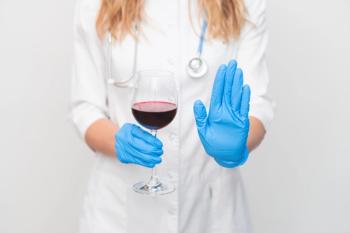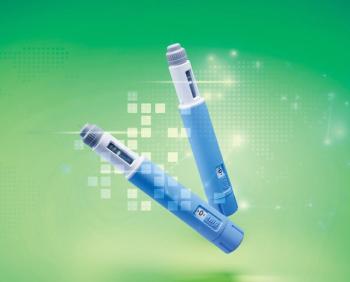
Chronic Daily Headache: Understanding and Treating It
Chronic primary daily headache may not be a singular disorder but rather one with various subtypes. Chronic migraine (also referred to as evolved migraine or transformed migraine), chronic tension-type headache, newly defined daily persistent headache, hemicrania continua, and post-traumatic headache are now recognized as subcategories of chronic daily headache
Chronic primary daily headache may not be a singular disorder but rather one with various subtypes. Chronic migraine (also referred to as evolved migraine or transformed migraine), chronic tension-type headache, newly defined daily persistent headache, hemicrania continua, and post-traumatic headache are now recognized as subcategories of chronic daily headache (Table 1).2
SUBTYPES OF CHRONIC DAILY HEADACHE
Chronic migraine is thought to be a natural progression from the initial episodic migraine. With increased frequency and severity, headaches may evolve or transform into chronic migraine headache.3 Overuse of analgesics further exacerbates the severity, duration, and frequency of the chronic migraine process in many persons (see Checklist Using ICHD II [2004] Headache Diagnostic Criteria).
Chronic tension-type headache evolves from episodic tension-type headache that is daily or frequent and lasts minutes to days.
Newly defined daily persistent headache is a primary headache with an onset that can be specifically dated by the patient to a viral or other infectious disease or to an injury or other event (whether provocative or nonprovocative), but may have no history.4 Its characteristics are similar to those of chronic tension-type headache in that migrainous features are absent.5 Although newly defined daily persistent headache is a primary disorder, it can be confused with chronic post-traumatic headache-a secondary disorder headache with similar qualities but whose onset is directly attributable to some provocative cause.
Hemicrania continua headache mainly affects women. This fairly rare condition consists of persistent unilateral head pain that varies in intensity but is virtually unresponsive to most drugs commonly used to treat migraine, cluster, and tension-type headache. The one exception is indomethacin, which seems to be the drug of choice: a favorable response to this NSAID may thus serve as diagnostic confirmation.6
Post-traumatic headache, a secondary type of persistent headache, results from a traumatic or provocative primary cause. As with any type of chronic headache condition, secondary causes of headache must be ruled out.
THE PERILS OF ANALGESIC OVERUSE
All these new daily persistent headache subtypes can be intensified by the overuse of medication,7 which, when taken in excess, can increase the duration, severity, and frequency of the headache beyond 15 days per month, and thereby transform the episodic headache into chronic daily headache.3
The medication overuse headache-commonly called rebound headache-typically begins with the use of 1 or more medications to assuage symptoms from episodic or intermittent headaches. The literature is replete with reports suggesting that any type of analgesic, if used with sufficient frequency-although in indeterminate quantities-over an extended period, can produce chronic daily headache or further exacerbate one that may already be present in a sensitive, susceptible person.7-9 Fully 80% of patients with chronic daily headache who present to the primary care physician exhibit analgesic overuse. Discontinuation of the analgesics may significantly reduce headache severity and frequency but with a resultant return to the original intermittent migraine baseline pattern.
Episodic headache can be transformed into daily headache when any analgesic (including those that contain butalbital or, in some cases, ergotamine or a triptan) is taken more than 2 or 3 times per week. It appears that the frequency of use-and not the dosage-leads to the development of medication overuse headache.7 If the patient begins with a primary type of headache, many years usually transpire before a chronic daily headache takes on the clinical features of the medication overuse headache, although earlier transformation is also common.
Patients with transformed migraine overuse an array of analgesics, including decongestants, triptans, ergots, muscle relaxants, and over-the-counter remedies. The headache is usually refractory and occurs daily or almost daily; it may vary in severity and location, and even in type. The analgesics initially provide interim benefit, but over time, the patient needs to increase the dosage and frequency to obtain the same relief.
Table 2 lists conditions that frequently coexist with chronic primary daily headache. If other symptoms develop in associated organ systems, for example, in the GI tract, the patient may have symptoms characteristic of irritable bowel syndrome or reflux esophagitis. Psychological symptoms also may appear: these include episodes of panic attack, anxiety, and depression. The patient may have periods of irritability or may have lapses in memory or concentration.
Patients with chronic daily headache appear to have an inherited propensity for a low tolerance to sensory stimuli. They are usually abnormally sensitive to light, sound, smell, taste, and touch. These persons seem to lack the neural ameliorating mechanisms that normally constrain the sensory stimuli of pain from reaching the higher centers of the brain. As such, when this normal equilibrium or homeostasis is overwhelmed, there is an abnormal response to an otherwise tolerable pain stimulus.
PATHOPHYSIOLOGY OF CHRONIC DAILY HEADACHE
Some investigators have postulated that repeated activation of the trigeminal nociceptors leads to sensitization of the second and third order neurons in the CNS. This causes functional changes that may underlie the allodynia hyperalgesia in patients with chronic daily headache and perhaps other chronic pain syndromes.10 It is possible that dysfunctional periaqueductal gray matter may be responsible for the evolution of episodic migraine to a pattern of chronic daily headache11; or it may be that transmitters such as serotonin, epinephrine, or dopamine in the brain are impaired, leading to psychiatric morbidities.12
It is further possible that chronic bombardment of impulses (which also may be associated with neuronal activity from the sensory [eg, sensory epilepsy] rather than motor systems of the brain [eg, motor epilepsy]) may be transmitted from the periphery to the CNS from such disorders as fibromyalgia and myofascial pain syndrome. These, in turn, may lead to overstimulation of the receptor sites, resulting in a pain perception disproportionate to what is felt at the peripheral level.
Eventually, the sensitive patient experiences an ever-increasing intolerance for pain symptoms from comorbid conditions associated with the chronic daily headache (Figure). The pain initiated by the comorbid condition finally inundates the normal ameliorating mechanisms in the brain, much as floodwaters overwhelm a deteriorating dam. As a consequence, preventive medications seem to be relatively ineffective in the face of analgesic rebound for the patient who presents with suspected analgesic overuse and for the patient with complicating comorbid disorders. The offending medication must be discontinued. However, withdrawal symptoms themselves can increase the intensity of the headache.
THERAPY
Management of chronic daily headache is complex and difficult. Successful therapy depends on a good history and an accurate evaluation of the qualities of the chronic daily headache (ie, its inception, early episodic qualities, and what the patient has done to address symptoms). Aggressive management must include nonpharmacological therapies, such as appropriate management of sleep, diet (Table 3), and exercise; the elimination of offending stimuli, such as caffeine, nicotine, monosodium glutamate, artificial sweeteners (eg, aspartame), chocolate, and alcohol; and frequent periods of rest and relaxation.
Work with the patient to define areas of stress at home and at work. Recognize symptoms of depression and panic disorder, and survey all body systems to identify dysfunction. This includes evaluation of the endocrine, GI, and urinary systems, as well as assessment of genital and musculoskeletal function, a survey of the skin (looking for signs of rash and allergy), and a review for any impairment or concomitant disease of the neurological system (Figure).
OUTPATIENT STRATEGIES FOR ANALGESIC OVERUSE
The patient is a good candidate for outpatient treatment if he or she:
- Is highly motivated (and likely to comply with therapy).
- Has good family support.
- Is not overusing more than 1 substance.
- Has overused the substance for a relatively short period (the shorter the better).
Table 4 outlines strategies that may be successful for management of chronic daily headache and lists the tenets of nonpharmacological, pharmacological, and alternative treatment options. It also explains the chronology of treatment.
Withdrawal of the offending medication is the most necessary step but will likely prove to be the most difficult. Patients often refuse to abandon a regimen that they believe is truly helping their headache pain. A great deal of patient education is therefore necessary to convince patients that they must discontinue certain medications and try a different approach.
It is equally important for the patient to realize that other nonanalgesic medications can be substituted to foster withdrawal and, ultimately, successful treatment. It is essential to engender patient support in particular-and family support in general.
Medications such as the ergots, nonopioids, and triptans can be discontinued abruptly or by tapering the dosage over 2 to 3 weeks. However, opioids, barbiturates, and benzodiazepines must be withdrawn very slowly over 2 to 12 weeks.8,13-15
Most patients need some analgesia during withdrawal from the offending medication. Suggestions include 2 weeks of therapy with:
- (550 mg bid).
- Celecoxib (Celebrex) (200 mg/d to a maximum of 400 mg/d).
- Valdecoxib (Bextra) (20 mg/d to a maximum of 40 mg/d).
- Metoclopramide (10 to 20 mg tid before meals and at bedtime). (This agent provides an adjunct to naproxen in the event of intolerance or GI distress.)
- Prednisone (60 mg/d tapered by 10 mg every 2 days over 2 weeks). (This agent provides an excellent adjunct to the NSAID.)
Early introduction of preventive therapy is an important antecedent to withdrawal therapy. A number of strategies can be effective. For example:
- Patients with depression and anxiety as well as those with panic attacks may require an antidepressant, such as a selective serotonin receptor inhibitor, a serotonin norepinephrine receptor inhibitor, or bupropion, for further stabilization.
- Patients with insomnia or other sleep disorders may benefit from small doses of a tricyclic antidepressant, such as amitriptyline (5 to 25 mg at bedtime).
- Anticonvulsants can decrease the incidence of headache by about 50%.16 Regimens include valproic acid (starting at 250 mg/d and increasing to 500 mg bid); topiramate (Topamax) (starting at 12.5 mg/d and increasing by 12.5 to 25 mg every 3 to 7 days to a maximum of 200 mg/d); and gabapentin (Neurontin) (300 to 2400 mg/d).
- Muscle relaxants, such as tizanidine, may be used for patients with fibromyalgia and myofascial pain syndrome in dosages as high as 24 mg/d.17
- ß-Blockers can also help prevent headaches in patients who have hypertension, palpitations, essential tremor, or mitral valve prolapse. Effective regimens include propranolol (80 to 240 mg/d); atenolol (25 to 200 mg/d); and nadolol (40 to 120 mg/d).
Preventive medication should be assessed every 2 months for continued efficacy.
INDICATIONS FOR INPATIENT THERAPY
If the criteria for outpatient therapy are not met, or if outpatient therapy proves less than optimal, consider an appropriate inpatient facility. Inpatient specialty headache centers provide a multidisciplinary approach that includes biofeedback therapy, psychological and psychiatric evaluation and treatment, physical therapy, and nutritional counseling. Patients with refractory chronic headache that fails to respond to appropriate outpatient preventive treatment can gain significant benefit from inpatient therapy.
References:
REFERENCES
1.
Pascual J, Colas R, Castilly J. Epidemiology of chronic daily headache.
Curr Pain Headache Rep
. 2001;5:529-536.
2.
Silberstein SD, Lipton RB, Dalessio DJ.
Wolff's Headache and Other Head Pain
. 7th ed. New York: Oxford University Press; 2001:247-282.
3.
Mathew NT. Transformed migraine.
Cephalalgia
. 1993;13(suppl 12):78-83.
4.
Vanast WJ, Diaz-Mitoma F, Tyrrell DL. Hypothesis: chronic benign daily headache is an immune disorder with a viral trigger.
Headache
. 1987;27:138-142.
5.
Vanast WJ. New daily persistent headache: definition of a benign syndrome.
Headache
. 1986; 26:317.
6.
Newman LC, Lipton RB, Solomon S. Hemicrania continua: 10 new cases and a review of the literature.
Neurology
. 1994;44:2111-2114.
7.
Mathew NT, Kurman R, Perez F. Drug induced refractory headache-clinical features and management.
Headache
. 1990;30:634-638.
8.
Diener HC, Katasarva Z. Analgesic/abortive overuse and misuse in chronic daily headache.
Curr Pain Headache Rep
. 2001;5:545-550.
9.
Zed PJ, Loewen PS, Robinson G. Medication-induced headache: overview and systematic review of therapeutic approaches.
Ann Pharmacother
. 1999;33:61-72.
10.
Srikiatkhachorn A. Pathophysiology of chronic daily headache.
Curr Pain Headache Rep
. 2001;5:537-544.
11.
Aurora SK. Imaging chronic daily headache.
Curr Pain Headache Rep
. 2003;7:209-211.
12.
Sheftell FD, Atlas SJ. Migraine and psychiatric comorbidity: from theory and hypotheses to clinical application.
Headache
. 2002;42:934-944.
13.
Ruoff G. Migraine comorbidity: consequent pharmacologic strategies for treatment.
Headache Pain
. 2004;15:9-15.
14.
Silberstein SD, Liu D. Drug overuse and rebound headache.
Curr Pain Headache Rep
. 2002; 6:240-247.
15.
Mathew NT. Amelioration of ergotamine withdrawal symptoms with naproxen.
Headache
. 1987;27:130-133.
16.
Mathew NT, Ali S. Valproate in the treatment of persistent chronic daily headache. An open label study.
Headache
. 2001;31:71-74.
17.
Saper JR, Lake AE III, Cantrell DT, et al. Chronic daily headache prophylaxis with tizanidine: a double-blind, placebo-controlled, multicenter outcome study.
Headache
. 2002;42:470-482.
18.
National Headache Foundation. Diet and headache. Available at:
www.headaches.org/consumer/topicsheets/diet_headache.html
. Accessed December 29, 2004.
19.
Headache Classification Subcommittee of the International Headache Society. International Classification of Headache Disorders. 2nd ed.
Cephalalgia
. 2004;24(suppl 1):9-160.
Newsletter
Receive trusted psychiatric news, expert analysis, and clinical insights — subscribe today to support your practice and your patients.













